Agenda:
Read 20 minutes
Book Orders – April 30th
Jump Rope for Heart – April 30th
Math: pgs. 172-173 #1-8, 10-12
Blue Measurement Books (see agendas for reminders!)
Health: Girls Inc. Forms

Agenda:
Read 20 minutes
Book Orders – April 30th
Jump Rope for Heart – April 30th
Math: pgs. 172-173 #1-8, 10-12
Blue Measurement Books (see agendas for reminders!)
Health: Girls Inc. Forms
Good afternoon!
Today was a busy day. We started off with our Multicultural Assembly. Students of all grades gathered in the gym to discuss the importance of recognizing how wonderfully diverse and multicultural our school community is. Students also sang, “We Are the World,” which is something that they have been practicing in Music class with Mrs. Power.
After the assembly we were able to share our “Simple Switch” projects with one another. I saw a lot of wonderful creativity from everyone who shared a project today. There were students who created a single closed circuit that had 2 switches as part of the circuit. There were students that created 2 closed circuits with 1 switch as part of each circuit. There were even 2 projects that used resistors as part of their circuits to help modify the flow of electricity through their devices! Well done everyone. I know that this project required a lot of work at home, so thank you to everyone for all of the help and support that you gave to your students in helping them to complete this project.
In Health today, the boys from Ms. McNeil’s class once again joined the boys from our class, while the girls all worked together with Girls Inc. in Ms. McNeil’s classroom. The boys and I started with reviewing some of the topics that we have been discussing. Then we watched Shane Koyczan’s “To This Day” together. This is a poem that we have already watched and discussed as a class today, but I wanted to share it with Ms. McNeil’s class because it does have such a strong and powerful message about bullying. You can view the poem for yourself by following the link below:
http://www.youtube.com/watch?v=ltun92DfnPY
Then the boys and I completed an activity called “Bullying Thermometer” in small groups. Each group was given 3-4 cards with vocabulary words related to bullying on them. The cards said word such as: intimidation, hitting, conflict, drama, practical jokes, etc. The group was challenged to think of their cards. Did they think that it was a “hot” sounding word (a word that was an example of very serious bullying) or a “cold” sounding word (a word that is still a form of bullying because it can lead to conflicts and misunderstanding, but that wasn’t as serious). The students worked as a group and then as a whole class to place their words on a scale from least harmful to most harmful. This lead to some interesting discussion between both of our classes, and it was interesting to hear where students thought the words should be placed and what their opinions surrounding the words were.
In Art today we started a multicultural Art project to help celebrate multicultural week. Students looked at a Matryoshka doll that I brought from home. They were asked to consider the details and the dress of the doll and the importance of the doll as a cultural item. Then students began to create their own nesting doll. Students are using a blank template so that they can decorate their dolls as they like or with symbols and designs that represent their own culture or families. We will finish assembling the dolls next week.
Agenda:
Read 20 minutes
Book Orders – April 30th
Math: Pgs. 169-170 #1-8, 10
Health: Girl Inc. forms signed
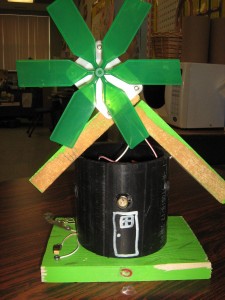
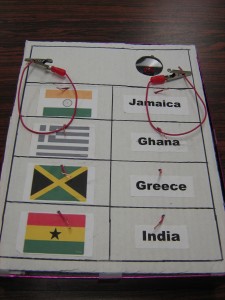
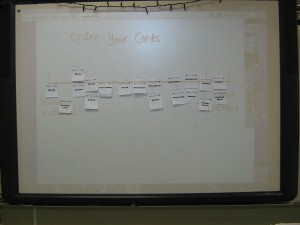
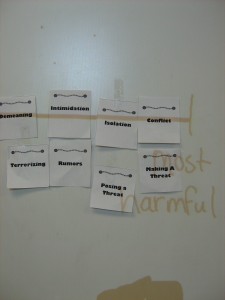
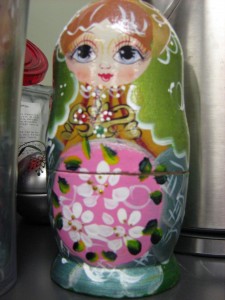
Good afternoon!
Today we started Lesson #1 of our new Math unit. We are going to be looking at equivalent fractions for the next few lessons. Today we started off by completing another Math 5 Live lesson as a whole class. You can view the lesson, as well as access parent support sheets and assessment questions, by visiting the link below:
http://www.learnalberta.ca/content/me5l/html/math5.html?goLesson=4
This lesson had students practicing dividing a pizza into equivalent fractions. For example:
1/2 = 4/8
Students practiced modelling equivalent fractions, as well as using multiplication and division to help them find equivalent fractions. For example:
Students can multiply the numerator and the denominator by the same number to find equivalent fractions. They can also divide the numerator and the denominator by the same number to find equivalent fractions. We will continue to explore fractions throughout the upcoming lessons.
In Social Studies today we continued our discussions on how climate affects the quality of life of those living in the Cordillera region. Students noted how different the climate is in different parts of the region. On the coast the weather is generally moderate with lots of precipitation. Closer to the interior, the summers can be hot and dry. The farther north you travel (eg. into the Yukon) the growing season becomes very short, and they have long, cold winters. We also discussed the connections that many people have to the land. We discussed the lumber industry and students shared many ideas of why some people would oppose the lumber industry in many of the older forests of British Columbia. Students noted how old the trees are, the impact on the environment, and we even had two students share how important these spaces might be as a symbol of identity. One student even describe them as sacred spaces. We have also begun a small activity called “A Special Place”. Students are working in groups to begin researching a community in the Cordillera and some of the things that make that community special. Take a look below:
Agenda:
Read 20 minutes
Book Orders – April 30th
Math: pgs. 168-169 #1-8, 10
Unit Test (for those absent): tomorrow!
Blue Booklets (tomorrow!)
Science: Simple Switch Project (tomorrow)
Health: Girls Inc. Forms
Our spring has come at last with the soft laughter of April suns and shadow of April showers. ~Byron Caldwell Smith, letter to Kate Stephens
Good afternoon!
Welcome back everyone. I hope you had a wonderful Spring Break and that everyone had time to relax a little. Today we started our new Math unit on Fractions and Decimals. We started off with a small group problem for students to solve. We always begin our units this way. It gives students the opportunity to explore some of the concepts that we will be studying, and it gives me the opportunity to discover what the students already know about the topics. The problem we tackled today can be found on pgs. 164-165. Students were asked to consider a garden and the cost of the seeds to plant the garden. Students worked on estimating both addition and subtraction of decimals. The Key Learner Outcomes that we will continue to develop throughout this unit are:
In Social Studies today we continued our study of the regions of Canada by looking at the Cordillera region. Students discussed the landforms of the region (eg. Rocky Mountains, extensive rivers, plateaus, coastal plains, etc.) and the impacts that geography has on quality of life. One of the dangers of the geography of this region is avalanches. Students were intrigued by the small selection about avalanches in the textbook so we watched the following clip from the Rick Mercer Report on how Parks Canada prevents avalanches from occurring near major roads and communities. Check it out below:
http://www.youtube.com/watch?v=_X7uZIgWN1g
In Language Arts today we continued our study of Bridge to Terabithia. Today students were asked to consider what advice they might give to another student who is being bullied. Bullying in one of the themes that is explored in Bridge to Terabithia, and we have spent a lot of time discussing Janice Avery and how she treats both Jess and Leslie, as well as the other students. We have also discussed some of Jess’ and Leslie’s behaviour towards Janice. In the novel, Jess and Leslie want to get revenge, but is that really the best solution? Students are working in groups to create a brochure on bullying that they could provide to other students to give them advice on how to handle bullying. We will continue to work on these brochures tomorrow.
Agenda:
Read 20 minutes
Book Orders – April 30th
Math: Blue Books (Friday)
Measurement Test (for those absent) – Friday
Multicultural Dress-Up: Tomorrow
Henna Tattoos (Div. II) – Tomorrow bring $2)
Multicultural Potluck – Tonight! (5:30 pm – 7:00 pm)
Taste-it Thursday! (Bring food bank donation to taste some Guacamole)
Science: Switch Project (Friday)
Health: Girl Inc. Forms
L.A. – Bridge to Terabithia Journal #2 (Wednesday)
Good afternoon!
Today we completed our Unit of Measurement. Students worked to complete their Unit 4 Test. Something that we like to do before we write a test is to relax. Today we used two different relaxation activities from GoNoodle to help us prepare. The first was a new activity called “Flow”. This activity led students through a deep breathing exercise. They were asked to imagine pulling a balloon out of the sky and releasing the balloon as they breathed out. This is the first time we have done one of the “Flow” activities, and it seemed to go very well. We also did our usually relaxation activity, “Airtime”. “Airtime” has students focus solely on their breathing. As the air bubble travels, the class travels across the United States. Today we made it to Portland, Oregon. Did you know that they have a museum of vacuum cleaners?
We also had Health today. Currently, we are having 2 different Health classes. The girls are with Ms. McNeil in 5L. The girls and Ms. McNeil are working with Girls Inc. of Northern Alberta. The program is about 6 sessions long and the topics for each session are: What is a friend, what is a bully, what is cyberbullying, strategies for handling bullies, dealing with difference & stress and anger management. So far things are going well and the girls seem to enjoy being together in a larger group. The boys have Health with me in 5N. We are also working on a Unit on bullying. Last week we discussed the different types of bullying and what makes a bully. Then we split into groups and brainstormed about the following: “What makes a good friend?”, “A good friend shouldn’t…”, and “The benefits of having friends are…”. Students had a lot of wonderful responses. Today we continued to talk about bullying we focused today on social bullying and exclusion. Students watched a clip called “For the Birds” by Pixar and we discussed some of the examples of bullying that we could see in the clip. Then we talked about why social bullying occurs and about peer pressure. We all agreed that it is important to think for yourself, and to do what is right for you. To practice positive social interactions, we also had a team building activity. Students were split into 4 groups. Each group had to construct a duplicate model of a statue that I had built out of snapcubes. The challenge? That each group could only send 1 group member to look at the statue at a time. They then had to return to their group to communicate what they had seen. Students were encouraged to work together, to stay positive, use appreciation statements, etc. Everyone did a wonderful job and it was a lot of fun!
Agenda:
Read 20 minutes
Book Orders – April 30th
Science: Simple Switch Project
L.A. – Bridge to Terabithia – Film Studies Question #12 (Wed.)
Multicultural Potluck – April 23rd
Heath: Girls Inc. Forms
Agenda:
Read 20 minutes
Reading Journal – tomorrow!
Book Orders – April 30th
Math: pgs. 149-150 #1-4, 6-9, pgs. 153-154 #1-7, 9
Show What You Know
Unit Test – tomorrow!
Science: Simple Switch Project – April 25th
L.A. – Bridge to Terabithia – Film Studies question #12 (Wed.)
Multicultural Potluck – April 23rd
Health – Girls Inc. Forms Signed (tomorrow!)
Good afternoon!
What a fun, math filled day here in Classroom 5N. We started our morning off by reviewing volume. Students have been working on practicing problems that have them calculating the volume of objects using cubic centimeters. While we have explored the cubic meter, today we began to practice some of these questions. Students worked in their Math groups to practice their textbook and workbook questions. The “Teacher Station” was also open today. Students reviewed their homework with me, and then they were each asked to construct a rectangular prism using centimeter cubes. Students then had to be able to tell me the dimensions and volume of their prism. Finally, we did have two other stations today. We had “Explore” open. In “Explore” students begin to look ahead at concepts that we will be studying. Today students began to explore capacity. They were provided with a variety of materials (measuring cups, buckets, jars, graduated cylinders, pattern blocks) and asked to start exploring the relationship between milliliters and liters using the materials. We also had the “I-Pad Center” open today. Students were using their Mathletics accounts to further develop and practice their skills.
Today we started Chapter 4 of “Bridge to Terabithia”. I have really enjoyed reading this book so far. Right now we work on our Novel Study every Wednesday. Students read a chapter, and we generally have accompanying activities and lessons. For Chapters 1-2 we of course did our Classroom Dress-up, 1970’s themed day. We also had students complete a Journal Entry about the novel so far. They were asked: “Running and drawing are both private and important interests to Jess. Write about an activity that you are passionate about that others may or may not know you like. Explain why it is important to you. How do you feel when you are doing it?” Students also worked to complete 1970’s themed paper dolls and we also created a “Top 10 List” for the qualities we would like to have in friend. For Chapter 3 students looked at creating Character Webs for both Jesse and Leslie. Students were asked to tell us about how each character acts, looks, feels, and what they say. We also started to look closely at some of the similes and metaphors used in the book, and practiced creating some of our own. This actually led to an extension activity that students who were present on Friday worked on. We read Maya Angelou’s “Still I Rise” and were challenged to find the similes and metaphors in the poem. Today we began looking at Chapter 4. We are going to be discussing some related concepts in the films “Wizard of Oz” and “The Neverending Story” and talk about the creation of Terabithia. We will also be completing our second journal entry on this chapter. Stay tuned for updates!
This afternoon we also started looking at capacity as a class. We discussed the relationship between milliliters and liters. We also gave students some referents to use when looking at these units. A liter is about 4 cups of something, while a milliliter is about 1 eyedropper full of water. I also like to think of a milliliter as being how much water a centimeter cube could hold. When you compare the two referents, it becomes much easier to understand why it takes 1000 milliliters to get 1 liter. We completed some activities together as a class, and will be practicing these concepts during our Math Groups tomorrow.
Agenda:
Read 20 minutes
Reading Journal – Friday
Book Orders – April 30th
Mathletics Meet-up – TONIGHT @ 5:30 pm and 7:00 pm
Math: pg. 147 #1-4
Unit Test – Friday
Science: Switch Project (April 25th)
Multicultural Potluck – April 23rd
Health – Girls Inc. Forms
Talent Show – tomorrow @ 8:30 am
Good evening!
We started our morning with our Monthly Virtues Assembly. This month our virtue is wonder. That actually fits into our classroom very easily, as we already look at a “Wonder of the Day” each day with http://wonderopolis.org/ each morning. We then answer the “Wonder of the Day” in the afternoon after lunch. I really enjoy the videos and we have a lot of fun taking the quizzes. Today’s “Wonder of the Day” was, “Why is it easier to lift someone in water than on land?” This afternoon we answered the question with some information about buoyancy and Archemides! Congratulations to everyone who was awarded a monthly award – keep up the good work!
In Math today we were able to finish building our cubic meter. Take a look at the image below. We then tried to estimate approximately how many cubic meters we thought the volume of our classroom would be. We had lots of great predictions. I heard students talking about how many cubes it would take to get to the ceiling, comparing the size of the cube to the ceiling tiles to help with estimating, and looking at the walls and the space of our classroom. More on measurement tomorrow!
In Science today we began discussing the 3 states of matter. We discussed solids, liquids, and gasses. Solids have particles that are tightly packed. They have strong attractive forces holding them together, and they only move a little; more like a vibration. Liquids have particles that are able to move. They slip and slide over one another easily. They have weaker attractive forces holding them together. This is why they don’t have a definite shape. Instead, they take the shape of their container. Gasses move a lot. We describe the particles as being very energetic. They move quickly and often bump into other particles. They have weak attractive forces holding them together, so they also take the shape of their container. Gasses will fill the entire container! We also talked about some of the changes that occur from one state of matter to another. For example, if a solid moves to a liquid, energy must have been added. If a liquid changes back into a solid, energy must have been removed. This can be done through things such as adding or taking away heat energy (eg. boiling water changes it into a gas). Finally, we discussed mixtures. Today we focused on heterogeneous mixtures. We discussed how the particles are not evenly mixed, and often you can still see the individual parts of the mixture. Think of a bucket of legos or a salad you would eat for lunch. A mechanical mixture is when you can see each separate component of the mixture. This also means that you could mechanically separate the mixture. You could sort your lego, or take the tomatoes out of your salad. Today we worked with 2 different heterogeneous mixtures. The first was sand and beads. Students were challenged to separate these two materials. They used a sieve. Students were given paper plates. They had to alter the plates so that the holes were large enough to allow the sand to pass through and small enough that the beads did not. We discovered that the sieve works quickly and efficiently if you make your holes as large as possible for the given materials, and with more holes in place. Students then worked with a mixture of sand, beads, and paper clips. They were allowed to use a magnet to aid them in separating these materials. Later we will continue our discussion of mixtures of solids, and we will be using air and water to help us to separate solids.
Agenda:
Read 20 minutes
Reading Journal – Friday
Book Orders – April 30th
Mathletics Meet-up: Wednesday @ 5:30 and 7:00 pm
Math: pgs. 143-144 #1-5, 7, 8
Unit Test – Friday
Science: Switch Projects – April 25th
L.A. – Bridge to Terabithia Character Maps (Wednesday)
Health – Girls Inc. Forms signed
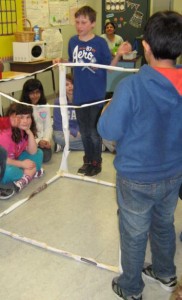
Good afternoon!
We had a very Math filled day today. This morning we reviewed perimeter, area, and volume. Students were given lots of practice work to help develop their understanding of volume, and all students conferenced with me at the red table. Students were asked to construct a rectangle with a given perimeter, a given area, and then to calculate the volume of a shape. Students were allowed to create their own shapes, so we had some really interesting shapes to try and solve! Working in small Math groups this year means that I get the opportunity to talk to the students one-on-one on an almost daily basis. It also means that I am better able to take notes or to adjust my teaching so that we are constantly moving towards our end goal. Here is an example page from my conferencing binder:
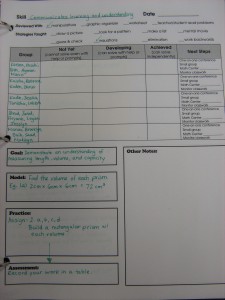
I am to quickly note which students are NY, DEV, or ACH the key learning outcome we are focusing on that day. I am able to take notes on the Math skills and processes we are using that day, and I am better able to track which students were present for daily activities and formative assessments. All of this information means that the next time I conference with a particular group or student, I will already know whether I should remodel something or if we are ready to move forward. It also means that I have a better understanding of which students may need more support with their practice.
Working in small Math groups also means that students are able to have strategies and techniques modeled for them on a much more individual basis. I am able to keep extra manipulatives on hand for students who are more visual or kinesthetic. Once students have demonstrated a skill or outcome, they are able to return to practicing, leaving me more time to work one-on-one with a student who may need some individual support that day. We usually work in our groups 2-3 times in an average week. Students rotate through a variety of different stations: explore, practice, games, mathletics, etc. but all groups get the opportunity to sit down with me to have mini-lessons or more guided practice; whatever that particular group needs! Overall, I have really enjoyed the Math groups this year. It has created a much more collaborative and supportive classroom environment. Even the students are more comfortable in explaining how they found/reached an answer, and students frequently help each other with their practice work.
We also began to construct a cubic meter today. Students worked together to create sides made out of recycled paper that were each one meter long. we don’t have it quite finished yet, but we are excited to see how big one cubic meter actually is tomorrow. This should help us to have a better understanding of some of the larger shapes that we are going to be calculating the area of!
Agenda:
Read 20 minutes
Reading Journal – Friday (Ninja – Compare the character in your book with a character in another book: 3 similarities and 3 differences)
Book Orders – April 30th
Jump Rope For Heart – April 30th
Mathletics Meet-up: Wednesday @ 5:30 pm and 7:00 pm
Math: pgs. 143-144 #1-5, 7, 8
Unit Test – Friday
Science: Switch Projects – April 25th
L.A. – Bridge to Terabithia Character Maps (Wednesday)
Bridge to Terabithia Similes/Metaphors (Wednesday)
Social: Interior Plains Questions (Wednesday)
Girls Inc. Forms – ASAP
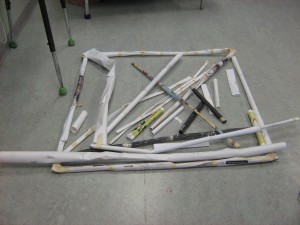
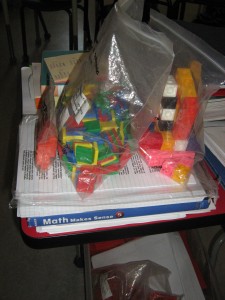
Agenda:
Read 20 minutes
Math: pgs. 140-141 #1-8, 10, 11
Science: Switch Project due April 25th
L.A. – Character Maps (Bridge to Terabithia) – Wednesday
Similes and Metaphors (Bridge to Terabithia) – Wednesday
Health: Girls Inc. Forms signed (Monday)